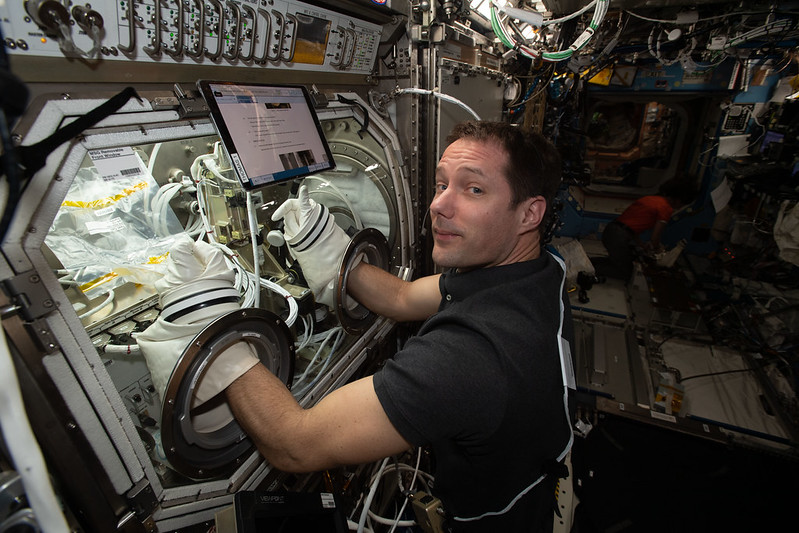Crew Turns Attention to Research Following Trio of Spacewalks

The Expedition 65 crew is back on microgravity research aboard the International Space Station today after kicking off September with three spacewalks in less than two weeks.
International astronauts Akihiko Hoshide and Thomas Pesquet relaxed Monday morning following their six-hour and 54-minute spacewalk on Sunday to install a modification kit on the station’s Port-4 (P4) truss structure. The Commander from the Japan Aerospace Exploration Agency (JAXA) then joined the ESA (European Space Agency) Flight Engineer for standard health checks that take place after the strenuous spacewalks.
Afterward, Hoshide swabbed and collected microbe samples from station surfaces for incubation and analysis back on Earth. Pesquet also collected microbe samples from the station’s atmosphere for observation on petri dishes.
NASA Flight Engineers Mark Vande Hei and Megan McArthur both relaxed on Monday morning having assisted spacewalkers Hoshide and Pesquet throughout the day on Sunday. Vande Hei then moved on and swapped and cleaned components for the ACE-T-11 physics study that is exploring space manufacturing techniques. McArthur replaced fuel bottles inside the Combustion Integrated Rack and later cleaned up debris in the orbiting lab’s Plant Habitat housing Hatch Green chiles growing for the Plant Habitat-04 space crop experiment.
Working throughout Monday inside the Kibo laboratory module, NASA Flight Engineer Shane Kimbrough began setting up hardware and trained for the newest rodent research experiment. Mice, delivered on the recent SpaceX Cargo Dragon mission, will soon be observed inside Kibo’s Life Science Glovebox to understand how microgravity affects the healing process.
Cosmonauts Oleg Novitskiy and Pyotr Dubrov continue cleaning up in the station’s Russian segment following their spacewalks on Sept. 3 and Sept. 9 to configure the Nauka multipurpose laboratory module for science operations. The duo from Roscosmos also had time for life support maintenance and cargo transfers from the Progress 78 resupply ship today.
Norah Moran
Powered by WPeMatico







